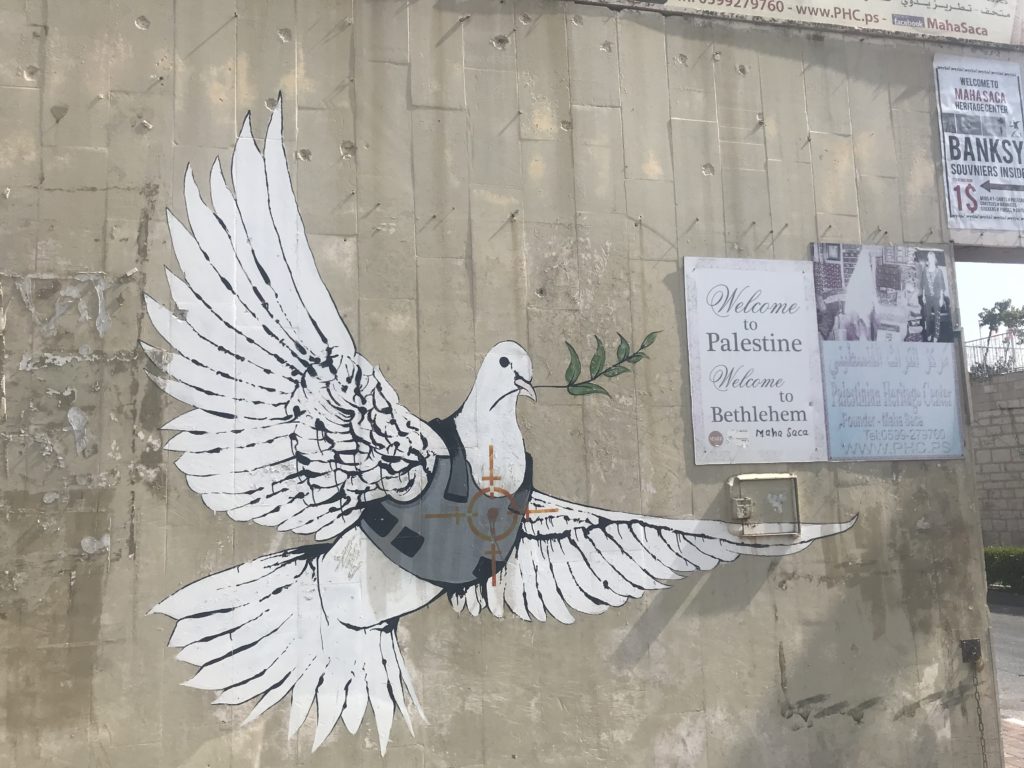I try to keep up with these Where We Are check-in posts in real time, but I’m actually writing this post from Italy after spending two weeks in Israel. Although we kept incredibly busy in Israel, that’s not why I’m late in writing about it. I put off publishing this post for two reasons.
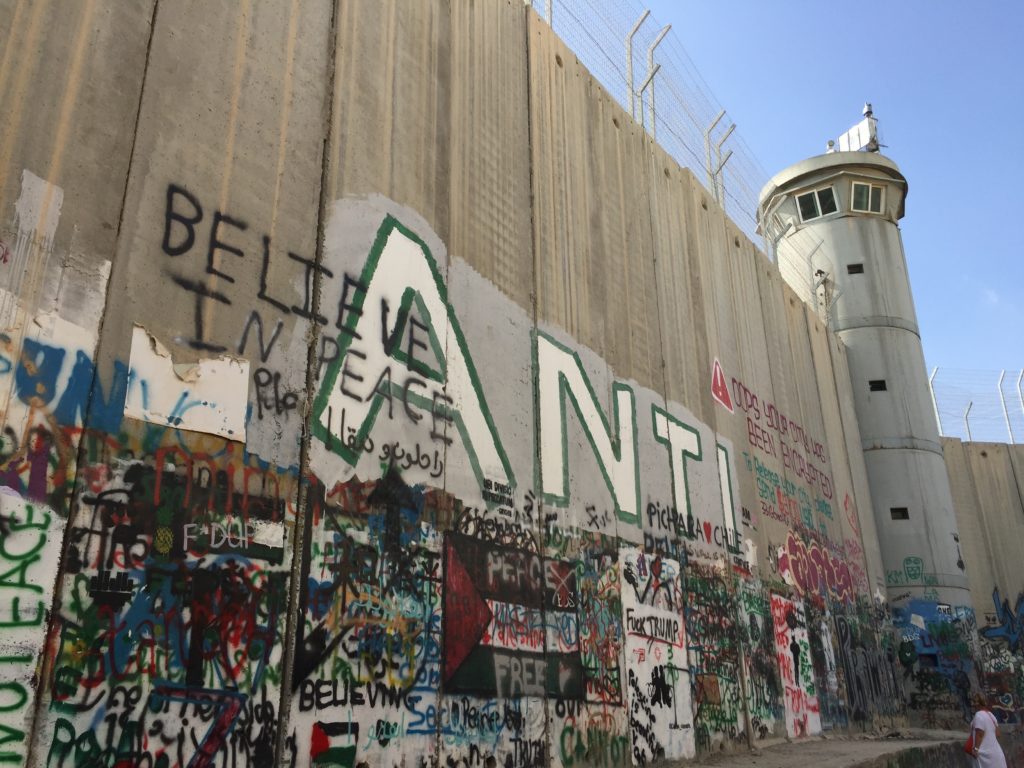
First, I felt like I owed it to both sides to see Israel and Palestinian Territories before making any sweeping generalizations about the countries/region. This is something that I still plan to avoid because I don’t think you can possibly lump them together.
And second, I wanted to be able to be honest about my experience on both sides, and I didn’t feel like I could do that with the cloud of passport control hovering over me. We had to cross into Israel twice (arrival and returning from a day trip to Jordan) and then get through security leaving Israel. I didn’t want to get caught by an Israeli Defense Force agent reading my blog post about the great time I had in Palestine.
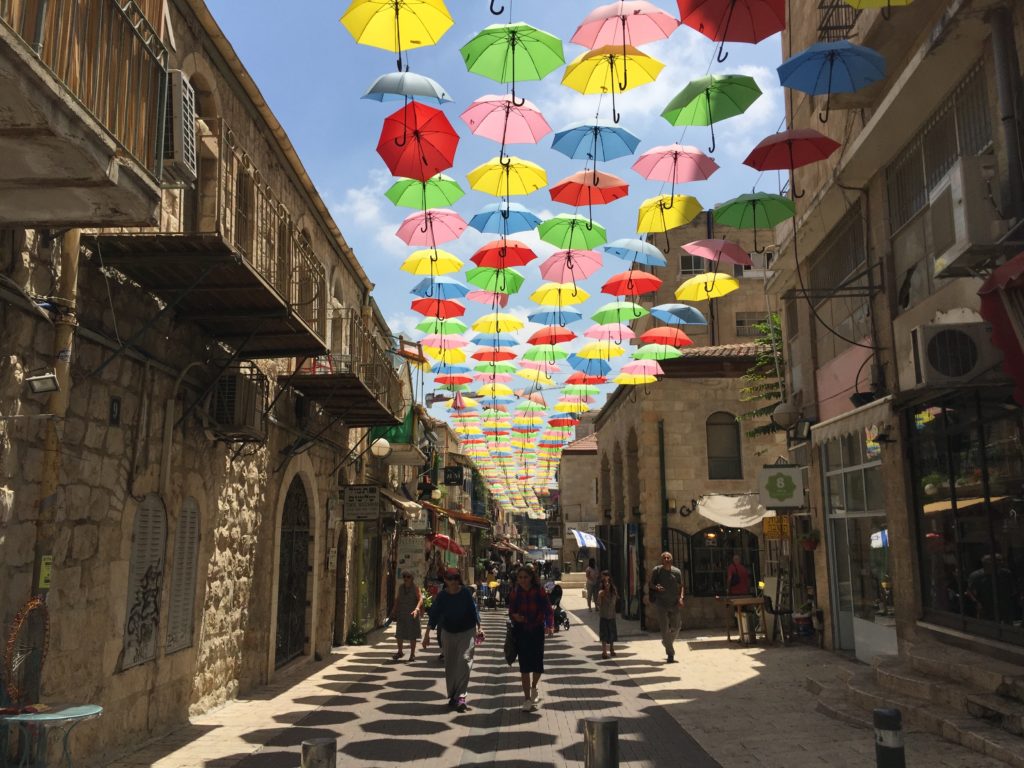
But now that we’ve been allowed in and out of the country and seen as much as we possibly could, I’m so excited to talk about it because it was absolutely fascinating.
Kenny actually surprised me with this leg of the trip. We were coming off of three weeks in Greece, which was beautiful and relaxing, but also so easy. We didn’t have our next destination booked, and we had to get out of the Schengen Zone for three weeks to stay in Visa compliance. Kenny planned and booked Israel all on his own, and I just showed up, ready to go.
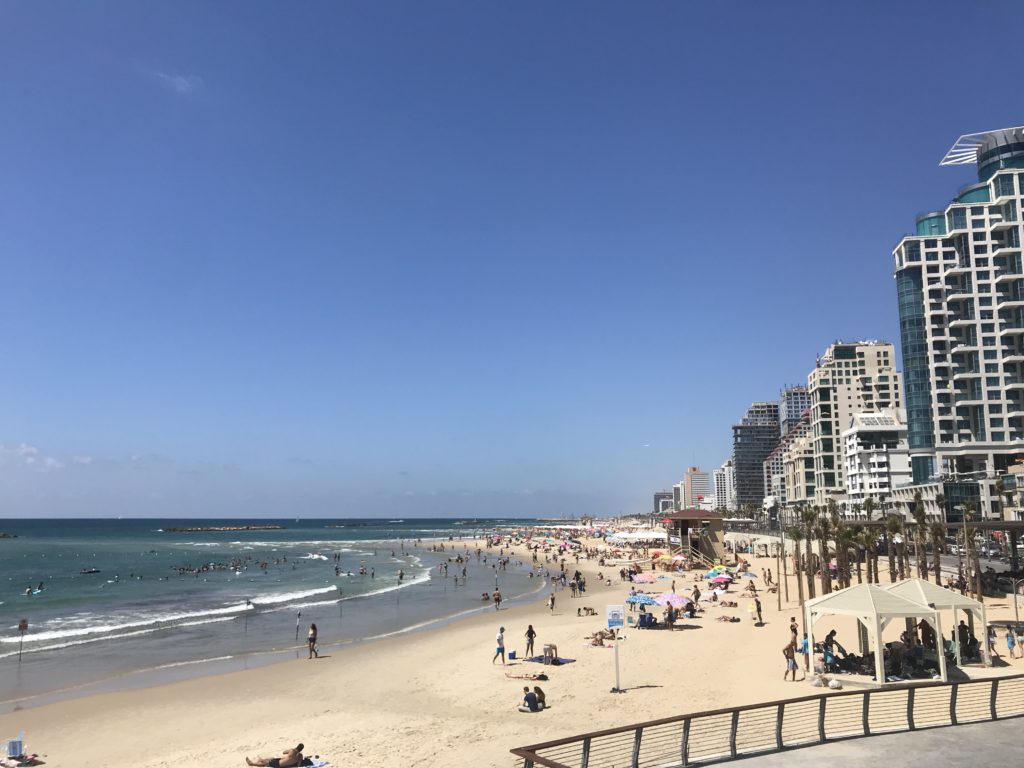
I was so excited that he picked Israel/Palestine! I was actually really looking forward to going there during our first leg in the Middle East earlier this year, but we ended up cutting it. It was right around the time Trump moved the Embassy and things were looking messy for Americans for a while. I was thrilled that we were able to work it back into our schedule.
We were in Israel/Palestine for two weeks. We spent twelve of those days on an organized tour with Abraham Tours that brought us around Israel, the West Bank and Jordan. We stayed in Tel Aviv, Nazareth and Jerusalem and took day trips to many historical, religious and natural sites. My favorite days included floating on the Dead Sea, the Dual Narrative Tour in the divided city of Hebron and the Lost City of Petra in Jordan. But everything we did and saw in the region was incredible.
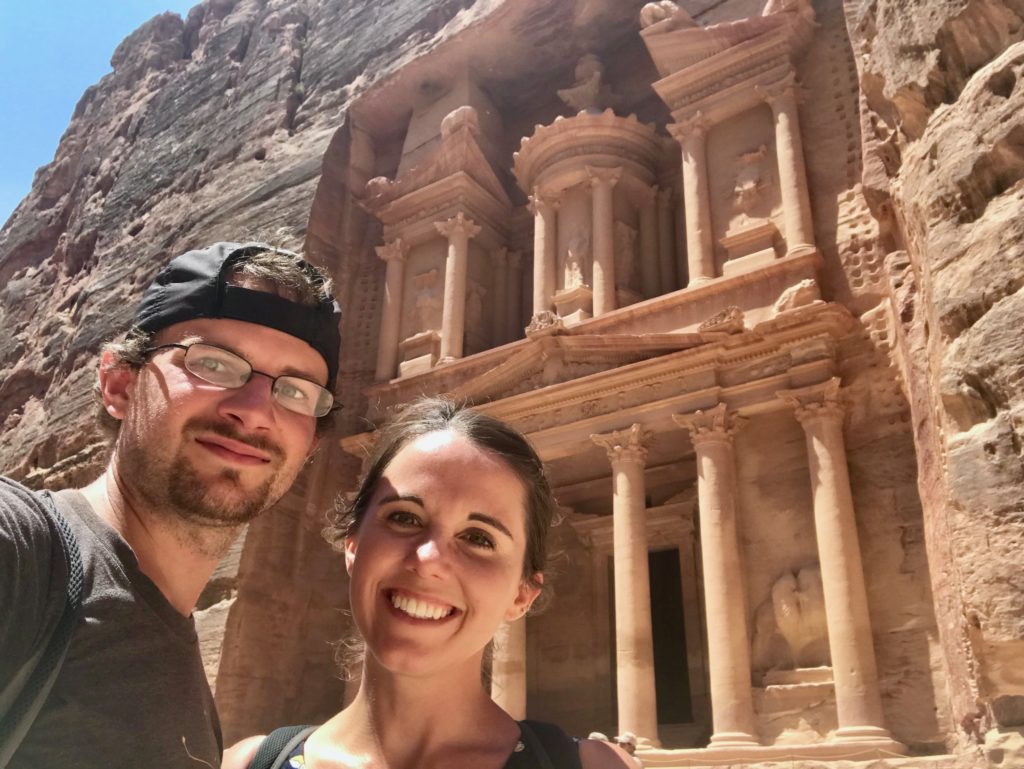
People — specifically Americans — kind of hold their breath when we talk about Israel/Palestine. In American media, it’s often portrayed as dangerous and people are worried that it shares a border with Syria. Fair enough.
There is, of course, some truth to those fears. Shortly before we arrived, Israel shot down a Syrian fighter plane and shortly after we left Golan Heights the IDF caught and killed six ISIS fighters trying to sneak across the border. But if we’re talking actual danger, getting into a car is still the statistically most dangerous thing we have ever done.

I won’t say that Israel/Palestine is not dangerous for anyone ever, but as a (white, American, Christian) tourist, it was not legitimately dangerous in a statistical measurement for us. Israel and Palestine are both incredible, and we would honestly highly recommend a visit to just about anyone.
I actually have a LOT to say about these places, but I’ll save that for a separate and more detailed post. But for now, here’s a few things we want you to know about Israel/Palestine.
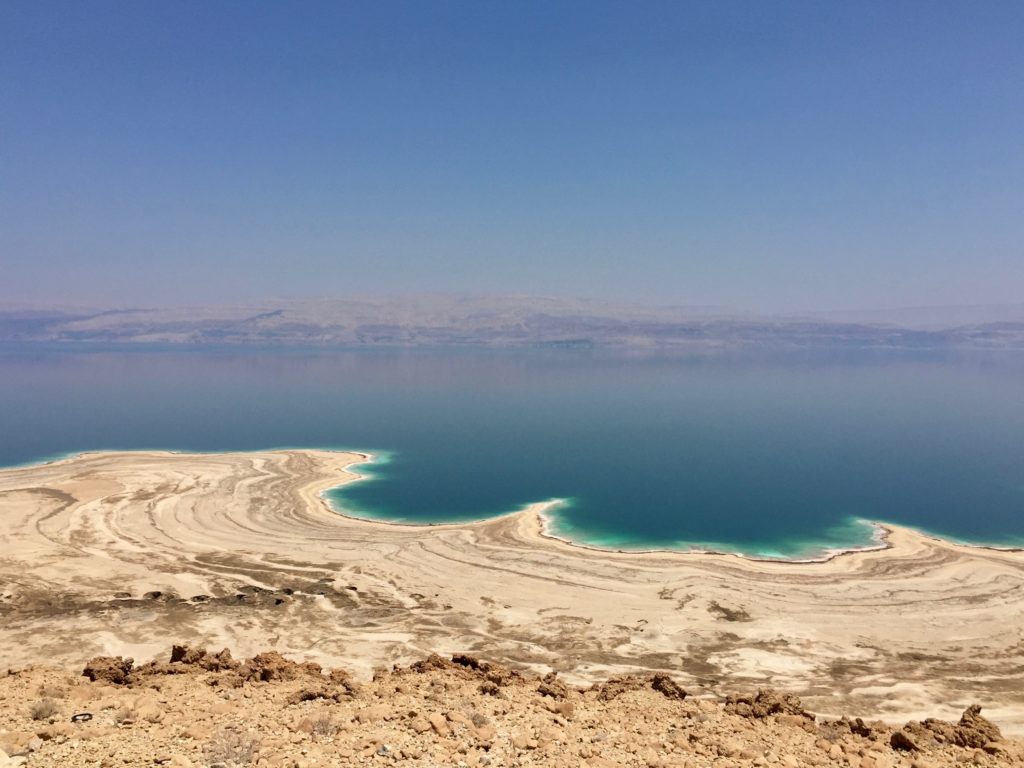
First Impressions on Israel/Palestine:
- It is different. That’s a huge statement coming from me, as I tend to focus on seeing the world in a more-alike-than-different lens. But I don’t think it’s right to say that life in Israel is the same as life in Chiang Mai or Budapest. The country, and even many of the cities, are very much divided — by physical walls, religious and ethnic differences and political control.Their actual lives are very much entrenched in these divides which restrict where they can travel both inside their country and abroad. Religion and politics seeps into their everyday lives in a way that’s very different than anywhere I have traveled.
- These religions really care about places. Most of Israel proper is inhabited by Jews, many of them orthodox, and most of Palestine is inhabited by Muslims (these are of course generalizations). Both of these religions have deep roots in the land. Sights like the Tomb of the Patriarchs (Abraham and Sarah’s tomb) and Temple Mount (the sight of the last jewish temple and stone of the sacrifice) are immensely important to both of these religions. They both care so much about the religious significance of actual places and praying at the sites of these historical locations. Growing up Catholic, places don’t really have the same significance (that’s why young Jews go on a Birthright trip to Israel and Catholics don’t). It was really interesting to see the how much both sides value these physical locations in their religious practices.
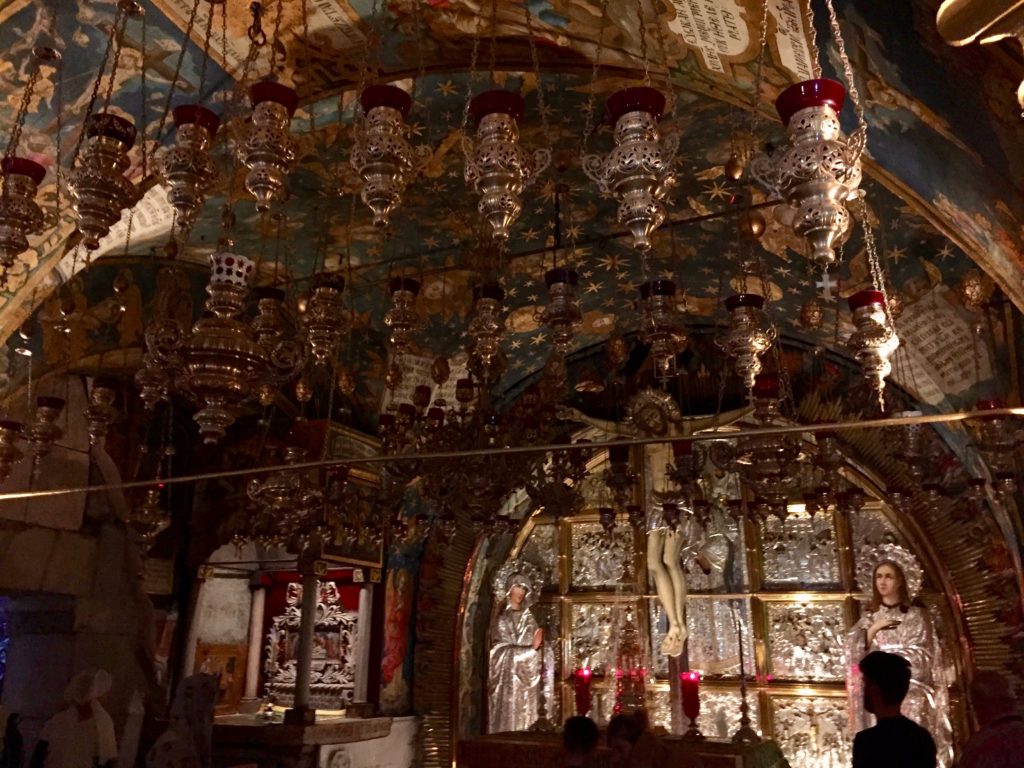
- There is more to it than religion. The region is rich with religious history, but it’s also rich in human history. Even if you’re not religious, you will not be short on amazing things to do. Jericho has an archeological sight with the world’s oldest known city. The walls date back to 10,500 BC! The Dead Sea is the lowest lake in the world and has one of the highest salinity levels. Floating on the Dead Sea is unlike anything I’ve ever experienced before. From Israel, it’s easy to hop across the border into Jordan to visit the Lost City of Petra. This Rose-Red city is one of the Seven Wonders of the Modern World and is absolutely breathtaking!
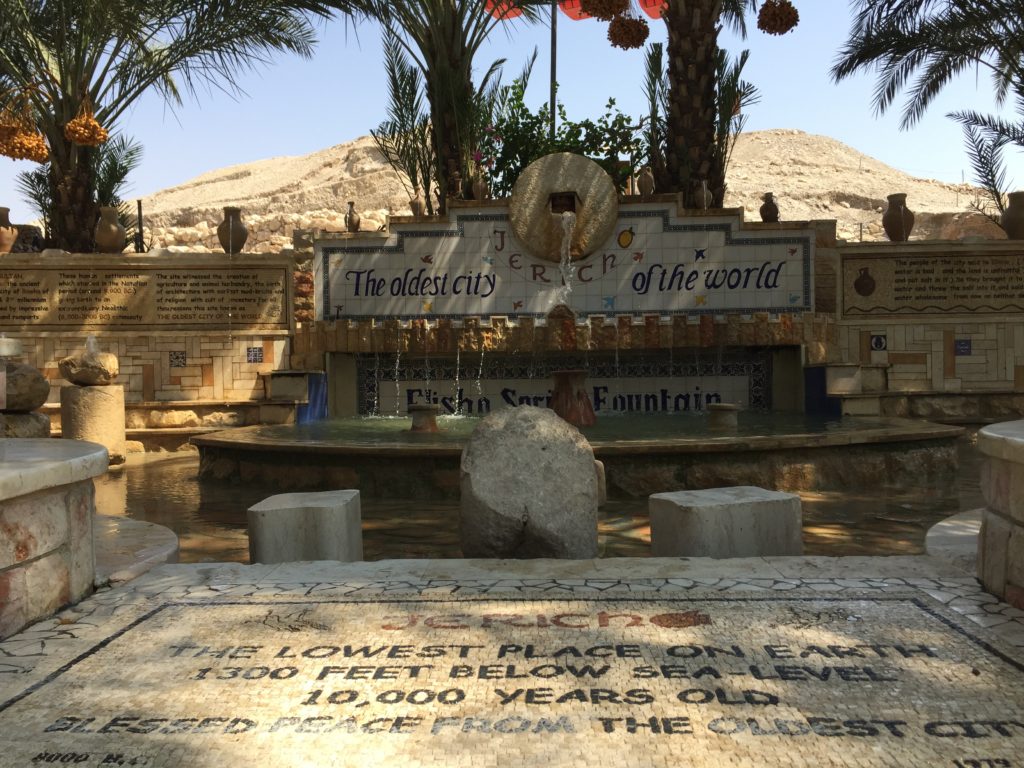
What you need to know — Greece:
- Population: Tel Aviv: 430,000 / Nazareth: 76,000 / Jerusalem: 858,000
- Altitude: Tel Aviv: 5 m / Nazareth: 347 m / Jerusalem: 754 m (and for kicks, the Dead Sea is -430 meters!)
- Temperature: Hot. Highs and lows in the 80s.
- Exchange Rate: 3.68 Israeli Shekel to $1 USD
- Primary Language: Hebrew, Arabic, English
- Walking Tour: We did take the Holy City Tour of Jerusalem, but it was a paid tour, not the free version. This tour was provided by New Europe tours, which we generally don’t like, but this one was okay.
- Time Zone: Israel Daylight Time, UTC +3 (8 hours ahead of US Central Time)
- Taxi: Yes, it was pretty easy to find a taxi in most of the cities we were in.
- Uber: No
- Public Transit: The major cities were all very well connected by bus. Jerusalem also had light rail.
- Emergency Number: 100
- Running: Tel Aviv has some great running routes along the waterfront and through Yarkon park. We were so booked up with tours though, that we didn’t run, but did bike through those areas.
- American Football: Not yet in season.
- Starbucks: No.
- Local Starbucks Specialty: None.
- McDonald’s Veggie Burger: I don’t think so, but we never made it to one.
- Coffee Price: About 7-10 Shekels(~3 USD) for a cappuccino
- Beer Price: About 30 Shekels (~9 USD) for a large (500ml) draft craft beer.
